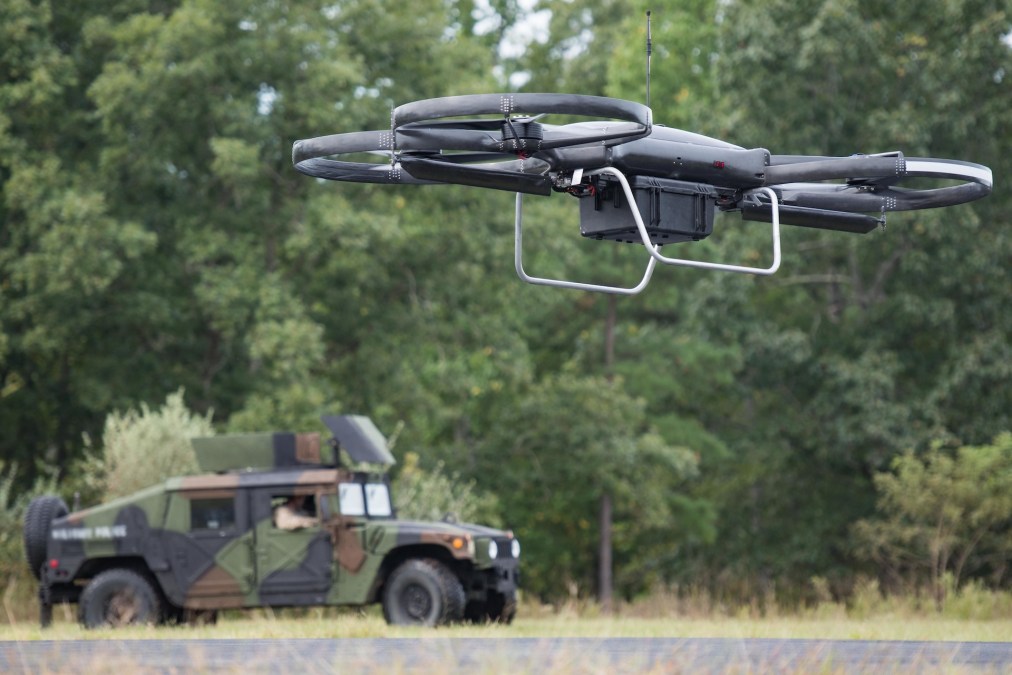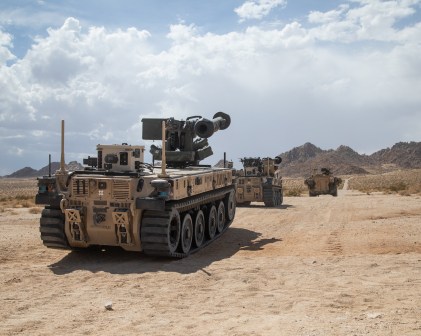Army Research Lab outlines plans for robotic systems evaluation

The Army Research Laboratory plans to evaluate unmanned platforms and autonomy technology at Aberdeen Proving Ground this summer, and it’s reaching out to industry to see who wants to participate.
Capability areas of interest for ARL’s Tech Assess ’23 event include autonomous mobility, air-ground teaming, coordinated behaviors of unmanned platforms, object tracking and identification, “global localization,” human language-guided operations, and weather-resistant drones, according to a request for information published on Sam.gov.
The Army and other Defense Department components are pursuing a variety of uncrewed systems enabled by artificial intelligence, autonomy, communication networks and other supporting technologies. ARL, which is part of Combat Capabilities Development Command, is reaching out to industry and academia to pursue those types of innovations.
“Military units operate in numerous types of environments and situations in order to protect operating areas, personnel, and infrastructure. Detecting and identifying unknown agents early, at a greater distance and with greater accuracy in all environments without excessive attention by the operator is ideal. The ability to consistently and accurately do this often involves the use of novel technologies such as artificial intelligence, adaptive algorithms, data integration, and seamless command and control. The purpose of Tech Assess ‘23 is to discover technologies which have the potential or ability to meet these demanding needs,” according to the RFI.
For the autonomous mobility category, officials are looking for systems that can maneuver on their own without being remotely controlled or tele-operated by humans. That includes the ability to detect and avoid obstacles, classify and traverse terrain, recognize the need for assistance and request it. Metrics will include number of human interventions, stops and distance traveled.
The envisioned teaming activities for drones and ground robots include “first-pass survey and detection of activity (pedestrians, vehicles) and route information” by one platform followed by a “second-pass” by additional platforms to enhance overall information gathering. “Metrics include number of true detections, time, false positives/negatives, and route representation,” according to the RFI.
The coordinated behaviors category involves information sharing between multiple robotic and autonomous systems while traversing or searching an area or route; activity reporting during area surveillance; and pedestrian tracking. Platforms will be “demonstrating ability to rely upon unique team member capabilities required to perform a task … and performance is influenced by the autonomous actions and decisions of team members.”
Officials will also be looking to see how well systems can detect, track and classify pedestrians or vehicles in “unstructured” and “urbanized” terrain.
Other topics include technologies that enable unmanned vehicles to operate in GPS-denied environments, and tools that allow system users to speak “natural language commands” to “initiate, update, suspend, and resume autonomous missions.”
Also sought is “weather-resistant” drone tech that would allow small unmanned aerial vehicles to operate autonomously in windy or other inclement environments.
For these event topics, the Army Research Lab prefers systems that are at Technology Readiness Levels 3-5, but organizations with tech at different levels of readiness may still apply to participate in the assessment, which is slated to take place “mid-summer.”
The deadline for industry and academia to submit applications and white papers for one or multiple topics is Feb. 22.






